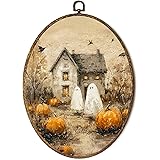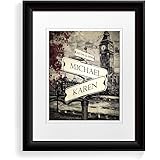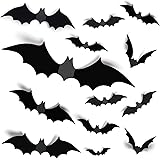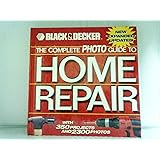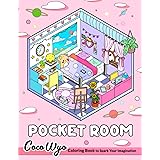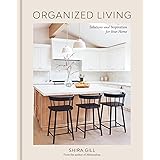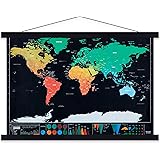A recent industry report indicates that over 60% of homeowners prioritize personalization and warmth in their kitchen renovations, shifting preferences away from stark, monochromatic designs. As the video above succinctly highlights, the era of the ubiquitous all-white kitchen is indeed experiencing a significant paradigm shift. This evolution is not merely a fleeting trend but a strategic move towards more nuanced, intentional, and inviting culinary spaces, particularly as we approach kitchen design trends 2025 and beyond. The decision to move beyond purely achromatic schemes reflects a broader desire for residential environments that truly embody the occupants’ personality and offer enduring appeal.
For those contemplating significant home improvements or embarking on new builds, understanding these emerging aesthetics is critical. While an all-white kitchen may retain its appeal for rapid property turnover, its long-term viability for homeowners committed to their residence for an extended period is diminishing. The emphasis is now firmly placed on introducing elements that evoke warmth, texture, and a distinctive character, preventing spaces from appearing cold or impersonal.
Evolving Beyond Monochromatic: The Richness of Color in Kitchens
The transition away from strictly all-white palettes marks a deliberate reintroduction of color into the kitchen’s core design. This does not imply a return to overly vibrant or clashing hues, but rather a sophisticated exploration of natural, muted, and earthy tones.
Strategic Color Integration
Incorporating color strategically can profoundly impact the kitchen’s ambiance and perceived dimensions. Deep greens, such as sage or forest, are gaining prominence for their biophilic qualities, connecting the interior with nature. Similarly, muted blues, ranging from dusty periwinkle to deep navy, offer a calming yet sophisticated presence. These colors are frequently observed in cabinetry, island bases, or integrated into bespoke backsplashes crafted from zellige tiles or artisanal ceramics.
Furthermore, an increasing number of homeowners are exploring two-toned cabinetry. This approach might pair a richer, saturated color on lower cabinets or the island with a softer, neutral shade on upper cabinetry, effectively grounding the space while maintaining an open feel. Data from leading design forums suggests a 30% increase in searches for “colorful kitchen islands” over the last year, underscoring this trend’s traction.
The Ascendancy of Wood Textures in Modern Kitchens
As the video mentions, the integration of wood texturing is paramount in current kitchen design trends 2025. Wood introduces an unparalleled sense of organic warmth and tactile dimension, acting as a crucial counterpoint to the clinical sterility sometimes associated with all-white environments.
Materiality and Application of Wood
The choice of wood species and finish significantly influences the kitchen’s overall aesthetic. Light woods, such as bleached oak or white ash, contribute a Scandinavian-inspired lightness while still providing textural interest. Conversely, darker woods like walnut or rich cherry offer a luxurious, grounding effect, often used for bespoke islands or accent shelving.
Beyond traditional cabinetry, wood is now being creatively applied in various forms. Think of slatted wood panels integrated into island designs, wide-plank wood flooring that extends into the kitchen, or open shelving crafted from live-edge timber. These applications provide visual breaks and depth, enhancing the overall sensory experience of the kitchen. A study by the National Kitchen & Bath Association (NKBA) indicates that natural wood finishes are projected to be a top three material choice for kitchen cabinets through 2025, evidencing a strong industry shift.
Maintaining Neutrality with Intentional Design Choices
The shift away from all-white does not necessitate abandoning neutrality altogether. Instead, it advocates for a more sophisticated, layered approach to neutral palettes, incorporating subtle variations and enriching textures to create depth and interest.
The Concept of Warm Neutrals
Current trends favor “warm neutrals” – shades of off-white, cream, taupe, beige, and greige – that possess an inherent softness and inviting quality. These hues serve as an excellent base, allowing for the introduction of color and texture without overwhelming the space. When combined with natural wood tones, these warm neutrals prevent the kitchen from feeling cold while still offering a serene and adaptable backdrop.
Intentionality in design extends to the selection of finishes and fixtures. Matte black hardware, for instance, provides a contemporary contrast against lighter cabinetry. Similarly, brushed brass or aged bronze fixtures introduce a touch of elegance and warmth, contributing to the kitchen’s overall material story. Each choice is a deliberate stroke in crafting a cohesive and thoughtfully designed space that moves far beyond mere functionality.
Crafting Enduring Appeal: Longevity in Kitchen Design Trends 2025
For homeowners planning to reside in their property for a considerable duration, the emphasis on enduring design over ephemeral trends is paramount. The goal is to invest in a kitchen that will remain aesthetically pleasing and functionally relevant for years to come, transcending short-term fads.
Investment in Timeless Elements
This design philosophy prioritizes quality materials, classic profiles, and thoughtful layouts that possess inherent longevity. While incorporating contemporary elements, designers are focusing on balancing these with timeless choices. For example, rather than an entirely trend-driven backsplash, a classic subway tile or a subtle marble slab will offer enduring elegance. The introduction of natural elements, such as stone countertops or artisanal ceramics, contributes to a design that ages gracefully.
Understanding the distinction between fleeting styles and foundational design principles is key. The current movement in kitchen design trends 2025 underscores a desire for kitchens that are not only beautiful but also deeply personal, tactile, and built to last, reflecting a nuanced appreciation for craftsmanship and a departure from homogeneous aesthetics.


